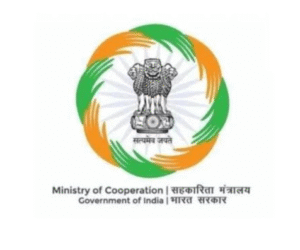
Introduction
-
Union Home and Cooperation Minister Amit Shah launched the new National Cooperative Policy 2025, replacing the old 2002 policy after 23 years.
-
It aligns with the vision “Sahkar se Samriddhi” (Prosperity through Cooperation).
-
The policy aims to modernise, expand, and make the cooperative sector inclusive, transparent, and tech-driven over the next 20 years.
Background and Political Context
-
India has over 8.4 lakh cooperative societies, reaching 31 crore people, especially in Maharashtra and Gujarat.
-
In 2021, the Ministry of Cooperation was established to strengthen this sector.
-
The new policy aims to increase cooperatives by 30%, expanding them into underrepresented states like Uttar Pradesh and Bihar.
Vision and Goals
-
Increase the cooperative sector’s GDP contribution threefold by 2034.
-
Establish at least one cooperative society in every village.
-
Ensure 50 crore people actively participate in cooperatives.
-
Strengthen self-reliance and local economic activity.
Six Pillars of the Policy
-
Strengthening foundational systems – legal, financial, and institutional frameworks.
-
Promoting vibrancy – revamping and energising existing cooperatives.
-
Preparing for future challenges – through digital tools and innovation.
-
Enhancing inclusivity – involving women, youth, and marginalised groups.
-
Expanding into new sectors – like tourism, green energy, and insurance.
-
Youth engagement and capacity building – training next-generation cooperative leaders.
Key Initiatives and New Areas of Focus
-
Support for cooperatives in non-traditional sectors:
-
Green energy
-
Tourism
-
Sahkar Taxi services
-
Insurance
-
-
PACS (Primary Agricultural Credit Societies) can now:
-
Run fuel stations, LPG services, Jan Aushadhi Kendras, and CSCs
-
Implement schemes like Har Ghar Jal and PM Surya Ghar Yojana
-
Model Cooperative Villages
-
Every tehsil will develop five model cooperative villages in partnership with NABARD and state cooperative banks.
-
These villages will focus on:
-
Dairy, fishery, floriculture, agri-services
-
Promoting women and tribal participation under White Revolution 2.0
-
Institutional Reforms and Technology Integration
-
Full computerisation of PACS operations.
-
Technology-based governance for accountability and transparency.
-
Cluster monitoring systems for better tracking and coordination.
-
Review of cooperative laws every 10 years to remain up-to-date.
-
Establishment of Tribhuvan Sahkari University for professional training.
-
Of the 83 reform points identified, 58 are under implementation, and 3 are completed.
Economic Contributions of Cooperatives (as of 2025)
-
20% of agricultural credit
-
35% of fertiliser distribution
-
30% of sugar and 10% of milk production
-
21% of fishery sector
-
13% of wheat and 20% of paddy procurement
Challenges
-
Regional imbalance: Dominance in western states; weak presence in northern and eastern states.
-
Poor governance in many cooperatives due to politicisation and lack of professionalism.
-
Low awareness and participation among youth and women.
-
Lack of modern technology and digital tools in rural cooperatives.
-
Limited financial autonomy and dependence on state funding.
-
Legal complexity due to overlapping central and state laws.
Way Forward
-
Ensure uniform cooperative laws and better Centre-State coordination.
-
Provide training and capacity building to cooperative leaders and members.
-
Promote digitalisation and financial literacy at the grassroots.
-
Encourage women and youth participation to make cooperatives future-ready.
-
Increase transparency and accountability through audits and governance reforms.
-
Expand cooperatives in underserved sectors and regions, ensuring inclusive growth.




